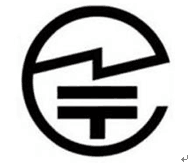What is Telec Certification in Japan

The Radio Law requires model approval of designated radio equipment (ie, compliance with technical regulations). Certification is mandatory, and the certification body is a registered certification body whose MIC is approved by the designated radio equipment. TELEC (Telecom Engineering Center) is the major registered certification body for Japanese radio equipment conformity certification. (1) TELEC accreditation standards The accredited technical standards refer to the classification and technical standards of the specified radio equipment listed in its official website technical regulations compliance certification system. It is worth noting that when these technical standards differ from those of the Radio Regulatory Commission Rules No. 18, the Radio Regulations shall prevail. (2) Types of certification TELEC certification includes Test Certification and Type Certification. Test certification is performed for each equipment unit. The certification is valid for each verified equipment unit. The test items for WiFi and Bluetooth products are basically similar to the European standard EN300 328. Among them, 2.4GHz WiFi products (802.11b) /g,2412~2472 MHz) and Bluetooth products use the MIC Notice No.88 Annex43, but for the 14 channels of the 2.4GHz WiFi products (Channel 14:2471 ~ 2497MHz), it is necessary to use Annex44 alone to test and issue reports. The corresponding fees also need to increase. The test standard for 5GHz WiFi products (802.11a, 5180-5320MHz, W52 Band, and W53 Band) follows the Annex 45, but it should be noted that the data shows that MIC will modify Annex 45 in the near future and the 5.6GHz device (Band W56) Classified into Annex 45, and has more stringent DFS testing requirements for Band 56.
Submission Required for TELEC Certification
(1) Technical Specifications
(2) Quality Management System Statement
(3) Quality Control Confirmation Method or Manufacturer ISO 9001 Certificate
(4) Construction Guarantee Letter
(5) Rated power statement
(6) Antenna report
(7) Test report (including test results, test setup photos and inspections conducted)
(8) Block diagrams, schematics, bills of materials, parts placement, IC data sheets, internal and external photographs, product descriptions, user manuals, Operation/Technical Description, Accessories Description)
(9) Label information (label position, label content)
(10) If you act as an agent or authorized representative on behalf of the manufacturer, you will need a trust/authorization letter
Explanation:
1. All submitted documents are recommended as Japanese documents, and English documents may also be accepted. The test report can be in the language used by the local testing organization.
WLAN, TELEC certification of Bluetooth products;
2.TELEC is Japan's mandatory certification for wireless products, somewhat similar to domestic SRRC. It follows the Japanese radio law. The specific test specification is to comply with the MIC (Ministry of Internal Affairs and Communications) Notice No.88 Regulation 3. WiFi and Bluetooth products test items are basically similar to the European standard EN300 328. The standard for 2.4GHz WiFi products (802.11b/g, 2412~2472 MHz) and Bluetooth products is MIC Notice No.88 Annex43, but the 14 channels for 2.4GHz WiFi products (Channel 14:2471 ~ 2497MHz) need to be separate Use Annex44 to test and issue reports. 4. For the 5GHz WiFi products (802.11a, 5180-5320MHz, W52 Band, and W53 Band), the test standard followed is Annex 45, but it should be noted that the data shows that MIC will modify Annex 45 in the near future and set 5.6GHz. The device (Band W56) also falls under Annex 45 and has more stringent DFS testing requirements for Band 56.
All of the above specifications go back to Annex 1, so you should also pay attention to the contents of Annex 1 when referring to the above standards.
Authentication cycle
Around four weeks, depending on the specific product